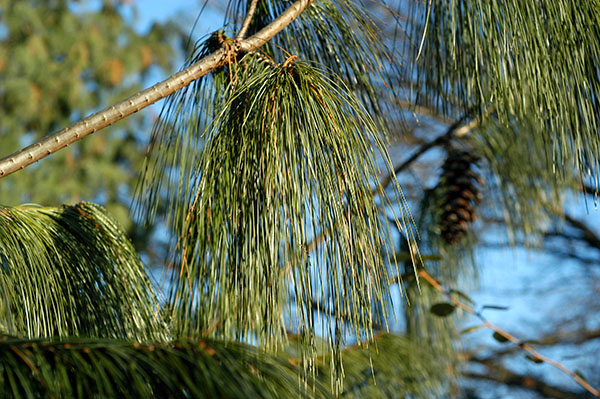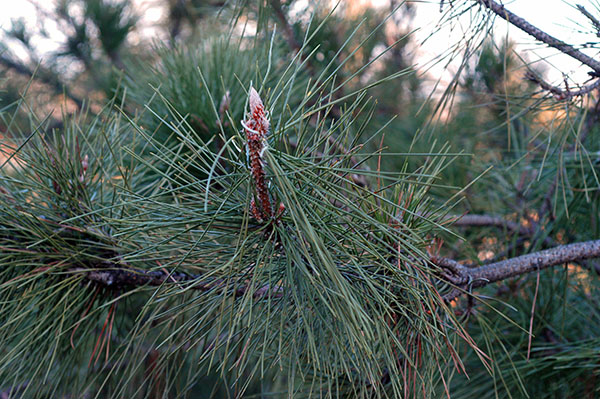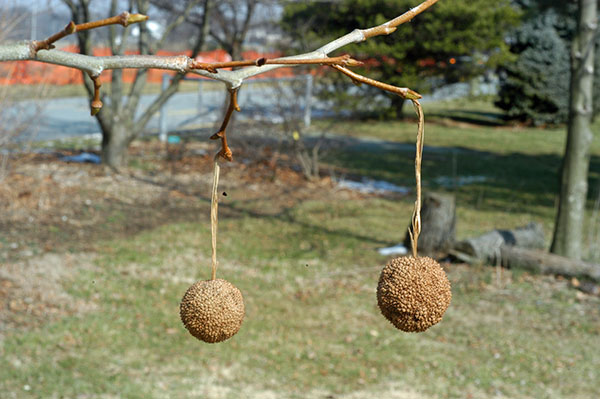Pinus wallichiana
Himalayan Pine
Temperate Himalaya, west to Afghanistan, east to Nepal
Pyramidal in youth, graceful, spreading, low branches at maturity.
Full sun, well-drained, sandy, loamy, acidic soil.
Five needle pine with loosely and broadly pyramidal habit in youth. Older trees have a graceful and elegant habit, often feathered with branches to the ground. Typical height is 30-50 feet with a spread of at least half the height. Needles persist for 3-4 years. Needles on young shoots are more or less erect, the older ones spreading or drooping. In general needles are flaccid, slender, and create a feathery effect; 5 to 8 inches long and gray green to blue green in color. Cones are subterminal, solitary, on a 1 to 2 inches long stalk, erect when young; pendulous the second year, cylindrical, 6 to 10 inches long, and light brown when ripe and very resinous. Himalayan Pine is a very elegant pine, useful for larger landscape areas. It makes a beauriful specimen tree.
Gray green to blue green
Gray-brown, fissuring.
Monoecious.
Light brown, stalked, 6-10 inches long, 2 inches wide.
Seed.
'Zebrina' - Gold variegation.






